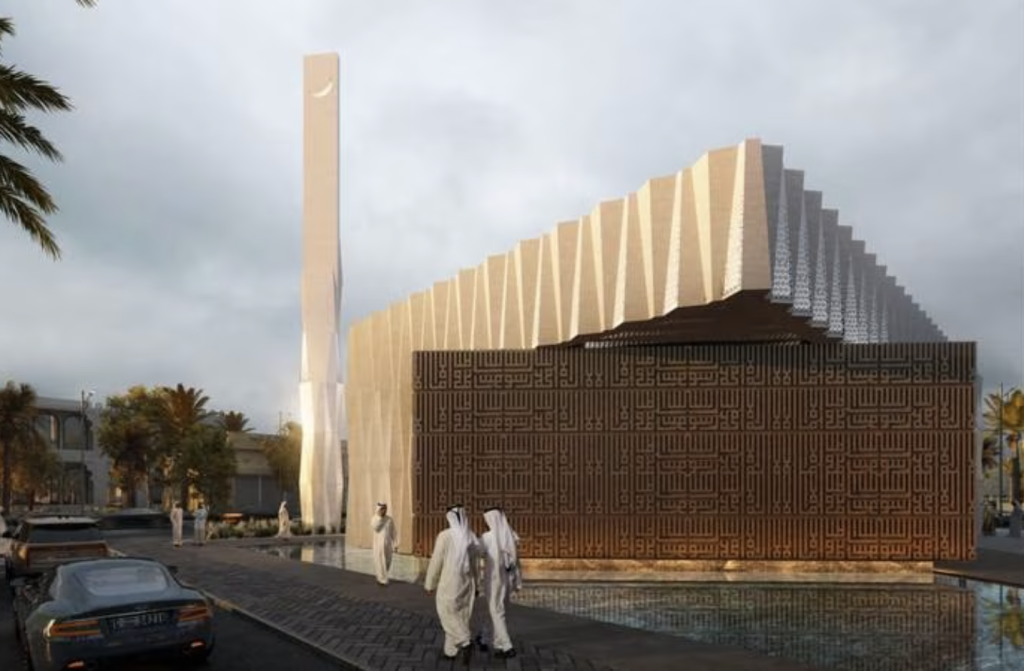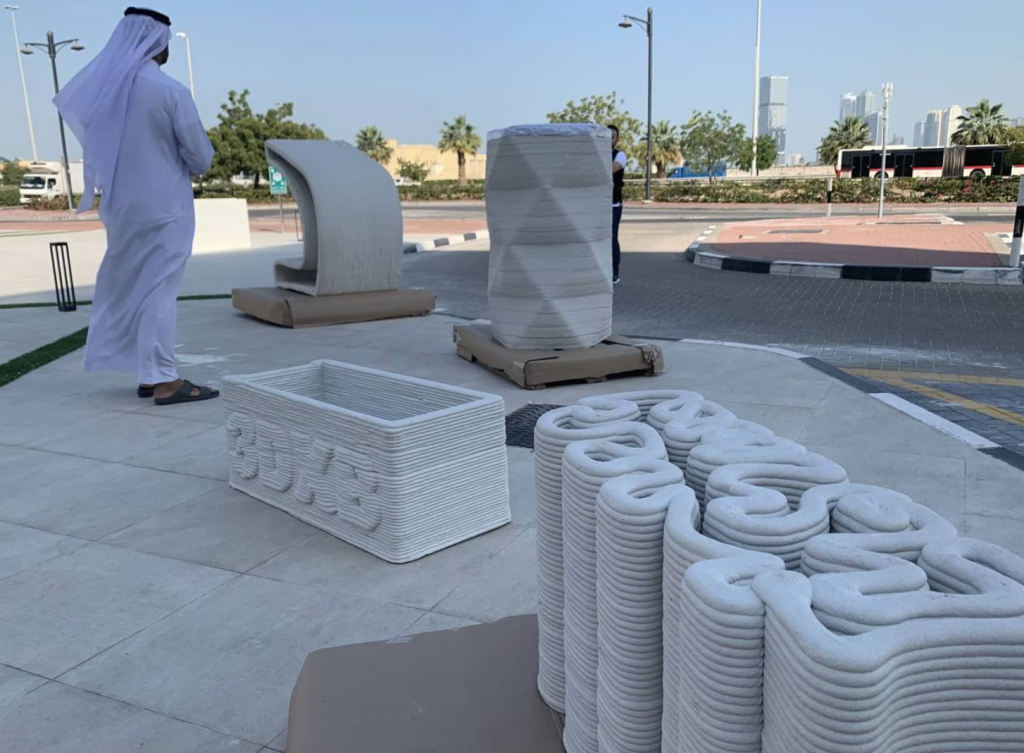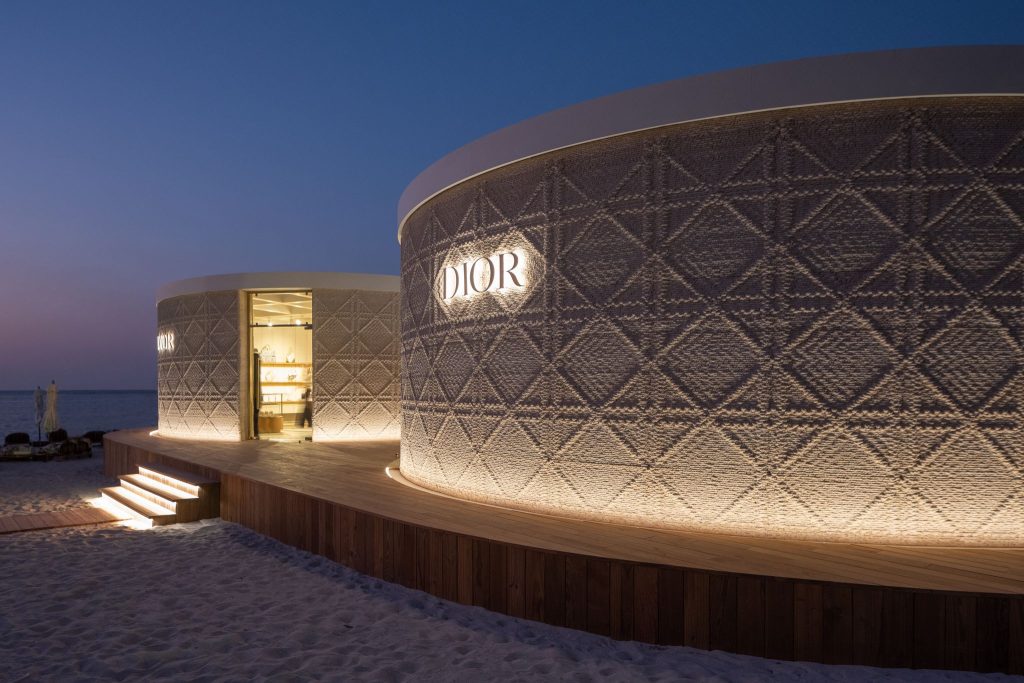Dubai’s Islamic Affairs and Charitable Activities Department (IACAD) is set to build the world’s first 3D printed mosque, according to The National.
Set to be constructed in Bur Dubai, one of the oldest neighborhoods in the Arab Emirate, the 2,000-square-metre mosque is expected to open its doors to up to 600 worshippers in 2025. Although it will initially cost more to build the structure using 3D printing instead of traditional construction techniques, it’s anticipated that these expenses will level out in the years to come.
“The cost is 30 per cent higher than building the mosque in the normal way because it is the first of its kind in the world,” Ali Al Suwaidi, director of IACAD’s engineering department, told a press conference earlier this month. “We expect the cost will be similar in the future with 30 years building guarantee.”

Infrastructure 3D printing in Dubai
In 2016, the Ruler of Dubai, His Highness Sheikh Mohammed bin Rashid Al Maktoum, launched the ‘Dubai 3D Printing Strategy,’ an initiative designed to position it as a leading hub for the technology by 2030. This was followed by Al Maktoum’s decree to regulate the use of 3D printing in Dubai’s construction sector, in support of its goal of ensuring that 25% of all its future buildings are 3D printed.
Such moves have encouraged many developers of innovative construction technologies around the world to ship them to Dubai, and create experimental builds with them. Since Immensa Technology Labs first filed a construction 3D printing patent there in 2018, the likes of 3DVinci Creations, ACCIONA and Freyssinet subsidiary Concreative, have each opened concrete 3D printing facilities in the UAE.
One of Dubai’s more recent builds has seen WASP 3D print Dior beach huts. Made entirely from natural materials, the two branded circular structures have been built to showcase the fashion house’s most sought-after beach and bag collections.
The Government of Dubai has also got in on the act, by unveiling the world’s first 3D printed research lab in July last year. Itself designed to serve as an additive manufacturing R&D hub, the Dubai Electricity and Water Authority (DEWA) facility is being used to design and build rovers and drones, as well as 3D print spares and prototypes.

A world-first place of worship
Dubai’s plans for a 3D printed mosque have been introduced by the IACAD, a department dedicated to charitable work. According to the organization, two of its core five objectives see it focus on mosque sustainability and Islamic leadership, and its latest infrastructure project represents a step towards both these goals.
In October 2023, construction is set to get underway on a mosque made from a mixture of raw materials and a specially-formulated concrete. Though the backer of the project hasn’t yet been unveiled, Al Shaibani has announced that the technology used to carry out the build will “reduce construction material waste,” and make it more sustainable.
It has also been revealed that the project will involve the operation of a ‘robotic 3D printer,’ which enables the deposition of materials at a pace of two square metres an hour, by three workers at a time. Once construction does kick off later this year, it’s anticipated that the mosque will take four months to build, and another 12 months to deck out with the facilities needed.
At present, the IACAD is said to be coordinating with local Dubai Municipality authorities to get final approval for its design, with the aim of getting the building opened and filled with worshippers within the next two years.

Who’s backing the mosque project?
It’s still early days in Dubai’s 3D printing initiative, and it’s likely that as construction begins we’ll learn more about the build. But the lack of detail about the project’s backer does raise a key question: which technology will be used to carry it out?
While 3D printing still has a lot to do, if it’s going to disrupt the wider construction sector, COBOD’s BOD 2 3D printer has already been deployed all over the world, from Oman and Angola to the United States. Having previously 3D printed a three-storey apartment block, the technology is more than up to the task, and it has also been used elsewhere in the Middle East.
Elsewhere, Apis Cor continues to gain traction with its ‘Frank’ system, and it committed to supporting multiple affordable housing 3D printing initiatives last year. Investment-wise, ICON has now raised over $460 million towards its technology as well, although so far, its activities have predominantly seen it focus on projects in the United States.
To stay up to date with the latest 3D printing news, don’t forget to subscribe to the 3D Printing Industry newsletter or follow us on Twitter or liking our page on Facebook.
While you’re here, why not subscribe to our Youtube channel? featuring discussion, debriefs, video shorts and webinar replays.
Are you looking for a job in the additive manufacturing industry? Visit 3D Printing Jobs for a selection of roles in the industry.
Featured image shows an artist’s impression of the upcoming mosque. Photo via the Islamic Affairs and Charitable Activities Department in Dubai.



